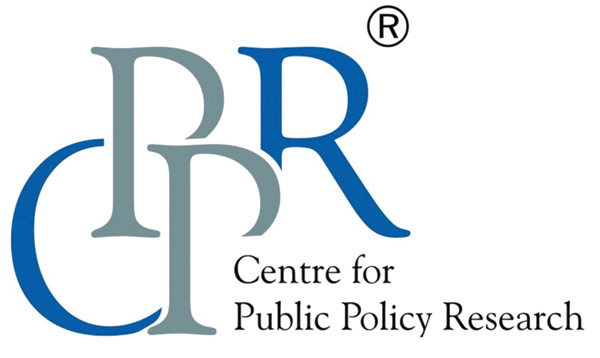From the blog

Webinar on ‘United States and India as Partners in Climate Action: The Clean Energy Agenda’
June 24, 2021
Food Security | Doorstep ration delivery can be promising once all crucial gaps are plugged
June 25, 2021COVID-19 Casualties Mapping in G7 Countries: Lessons from Japan

Introduction
G-7 countries are the most advanced industrial democracies in the world. Member countries are Canada, France, Germany, Italy, Japan, the UK, and the US – the most industrialised countries of the world representing nearly 70% of global GDP for decades. Ever since their formation in 1975, G-7 countries functioned like the global elders to guide the political direction, global economic governance, international security, energy policy, and much more. The world couldn’t do without them. This article looks at the COVID-19 death toll among G-7 countries to examine if they present any pattern or lessons that might be beneficial. Using the empirical evidence of COVID-19 recorded fatality suffered in G-7 countries, this article analyses G-7 countries’ death toll count for possible pattern understanding.
COVID-19 death toll pattern among G-7 countries
As the graph and empirical evidence suggests, COVID-19 death toll count among G-7 countries curiously present three prominent patterns. First, G-7 members like the USA, UK, and France- considered the three most powerful countries in the world suffered the heaviest death toll along with Italy. Canada and Germany come next with far less death toll. The case of Japan, however, is spectacular. It suffered the least death toll among the G-7 countries.
Figure 1: G-7 Countries & Covid-19 Death Toll (per million)

World Biggies: Worst sufferers
The United States of America, the so-called most powerful nation in the world, seemed to be coming down on its knees. Britain was hard hit too followed by France. Italy was the early COVID-19 outpost and it suffered countless casualties. Within the G-7 block, Canada and Germany experienced far less death toll is a point to be noted. While Canada managed to contain the community transmission of the virus before it became extremely severe by focusing on the norms of social distancing, Germany introduced a lockdown policy at an early stage. Still, the country managed the crisis by carrying out rapid tests. Frequent testings helped to catch the infection at a later stage and thereby reducing the death toll. However, Japan followed a different model by involving the public and essence of Japanese culture which makes it a case of research.
What do we learn from Japan?
The world went berserk in imposing varying degrees of restrictions, impositions, and lockdowns sporadically experienced in human history. Japan on the contrary, in the very early stage of the pandemic, declared that it politically and constitutionally can’t impose restrictions and lockdown. (Repeta, 2020) However, they extended a series of cautions to be followed and advised social distancing to the Japanese people.
Till December 2020, Japan’s COVID-19 death cases were very marginal in comparison to other nations. Even though the virus is mainly dangerous for the aged, Japan did not record any high instances of deaths being the nation with the highest elderly population. This is because Japanese society is inherently disciplined and self-conscious. Without the government imposing any compulsory lockdown, the people were sincere enough to take care of the norms of social distancing and sanitisation. Both the public and private facilities were engaged in COVID‐19 patient care, as Japanese citizens have access to all hospitals, whether public or private, without any difference in reimbursement rates. (Tokumoto, et al., 2020)
In response to the increasing virus cases, the Government ensured that there were enough COVID‐19 response committees in local governments to increase the number of COVID‐19 consultation centres. The state also enhanced public risk communication and fostered mutual investigations and information sharing. Additionally, given Japan’s periodic susceptibility to natural disasters like tsunami and earthquakes, as a matter of culture, Japan seems to be crisis-ready which possibly helped Japan experience fewer death tolls compared to their G-7 counterparts- a lesson possibly every country must learn.
Conclusion
Given the economic might, advances in science and technology, medicine, and healthcare sectors in these countries, it may be only fair to imagine that COVID-19 management in these countries was the best to deal with the healthcare crisis. Instead, the COVID-19 pandemic affected G-7 countries as much as it did to the rest of the world. However, it is only Japan that blended Japanese culture and policy solutions innovatively to stand out from the rest.
Works Cited
- Repeta, L. (2020, April 14). The coronavirus and Japan’s Constitution. Retrieved from The Japan Times: https://www.japantimes.co.jp/opinion/2020/04/14/commentary/japan-commentary/coronavirus-japans-constitution/
- Tokumoto, A., Akaba, H., Oshitani, H., Jindai, K., Wada, K., Imamura, T., . . . Shobugawa, Y. (2020). COVID-19 Health system response monitor: Japan. Japan: World Health Orgnaisation. Retrieved June 2021, from https://apps.who.int/iris/handle/10665/338399
Image Courtesy: AFP
Views expressed are personal and need not reflect or represent the views of Centre for Public Policy Research.
(This blog was written by CPPR interns Aastha Rathi & Saumya Avasthi under guidance of Dr. R P Pradhan, CPPR Distinguished Fellow)

